Different Types of Fishing Lures
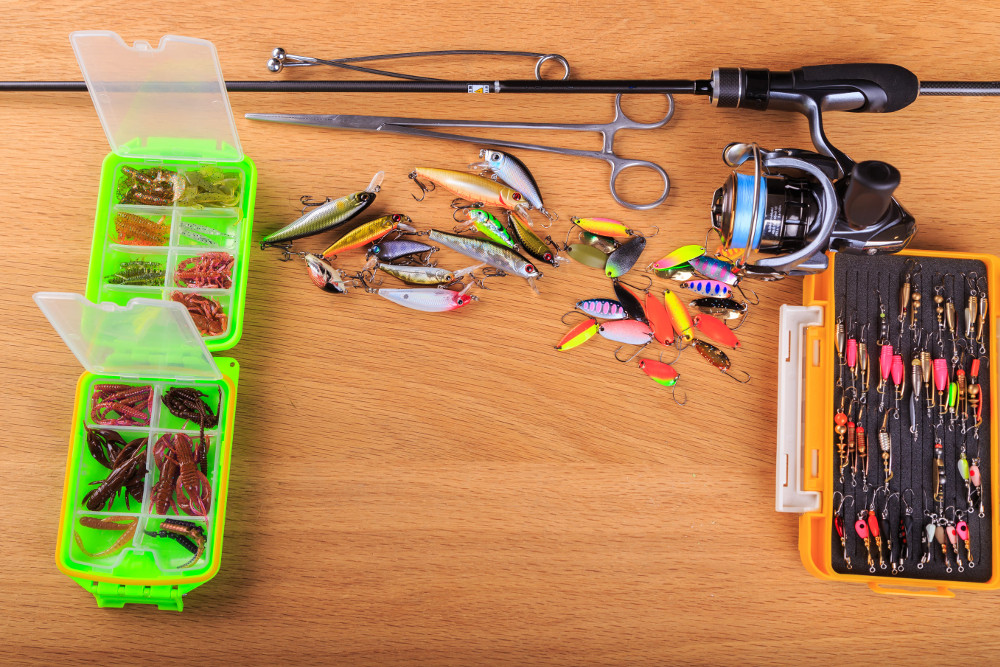
Fishing is somewhat unique in that you can make it as simple or complex as you want. Realistically, you can have a great day on the water with a rod, some hooks, and a bucket of worms, but if you plan on filling a tackle box so you always have something available, it’s always a good idea to understand what you’re putting in it.
There are many different types of fishing lures available. Some or more common than others, primarily due to their versatility, while others have very specific purposes. In this article, we will provide an overview of the different types of lures currently available. For many of these, we have already written ‘How-To-Guides’, so where applicable, Flannelfishermen.com and his team will also provide a link to those articles for a more comprehensive understanding.
Different Types of Fishing Lures Are:-
- Crankbaits
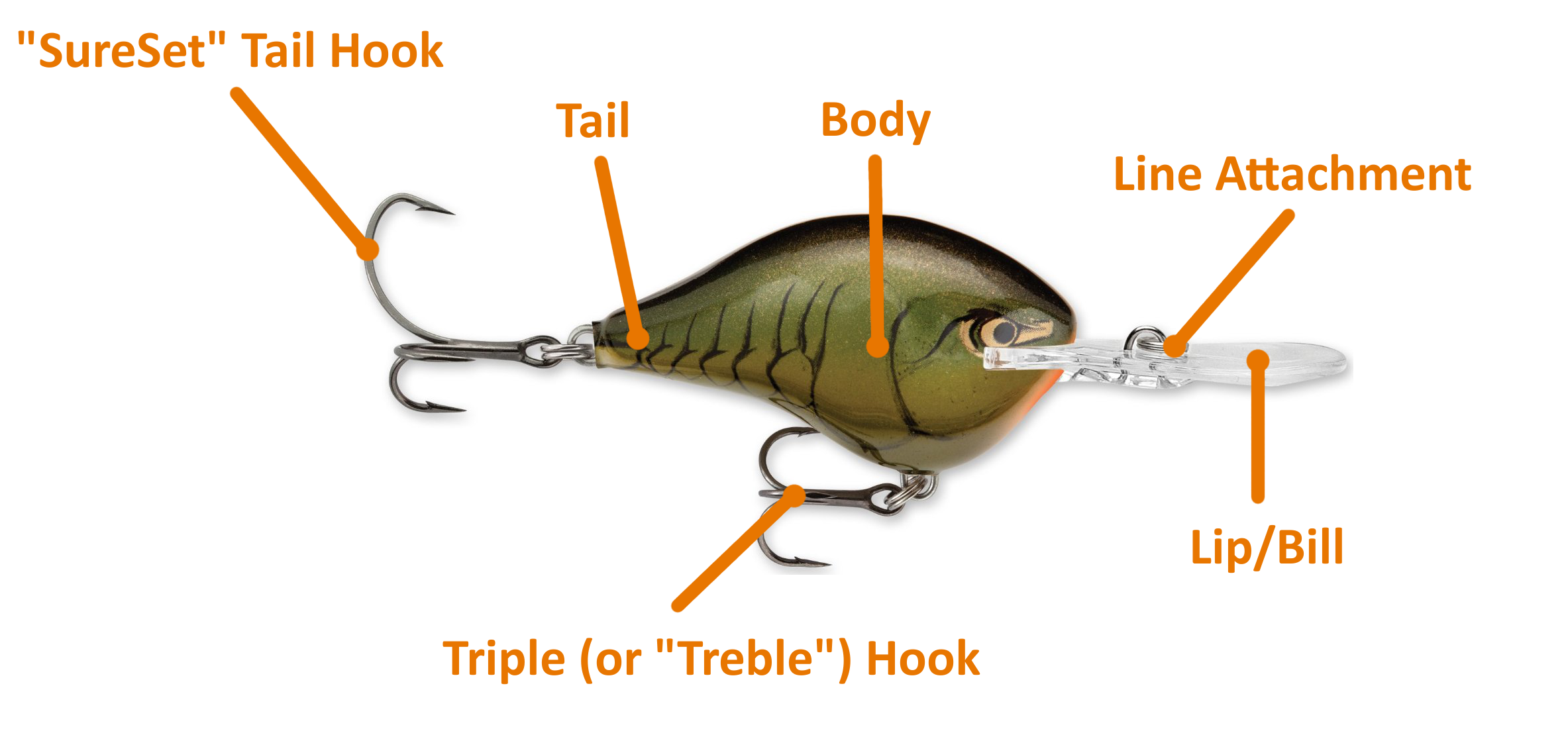
Also commonly referred to as ‘Cranks’, these are arguably the most popular type of fishing lure on the market. Cranks are meant to mimic natural prey fish, for example, shad, and employ various types of action, or wobble.
If you’re fishing on a lake or other body of water that you’re unfamiliar with, or you’re on familiar water but want to cover a large range, then cranks can be an ideal choice. They are very castable and the retrieve is usually pretty quick, so you can cover lots of water in a short amount of time.
One thing to keep in mind is that not all cranks are the same. They differ in two main ways. First, the length of the lip, or bill, on the front of the crank will determine it’s depth upon retrieval. The shallowest-diving cranks will have short lips (usually square), and deep-diving cranks will have the longest lips which are usually round at the end.
In addition to length, crank lips can also come in many different widths. This will affect how much they move as you reel it in. The general rule is that a wider lip will create a more noticeable, or wider, wobble. A narrow lip will create a tighter wobble with a slightly higher frequency in many cases.
Feel free to check out our guide on how to use a crankbait for much more detailed information!
- Spoons
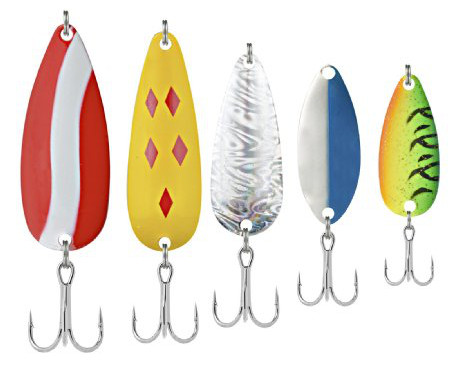
Spoon lures, or ‘spoons’, are a true classic. These lures are relatively simple in design, and while they don’t look as natural as a crank, their color schemes and attractive characteristics can make them equally as valuable.
Spoons come in many different sizes and colors. Generally speaking, the bigger the fish you’re targeting, the bigger the spoon you should use. You have more flexibility on the smaller side, that is, you can still use smaller spoons for large fish, but it will definitely be more difficult the other way around.
Similar to cranks, spoons can also be cast a long distance and retrieved relatively quickly. In this case, they will sink as far as your line allows, to maintain a deep retrieval you should focus on the speed of which you’re reeling it in. You can also use spoons in a vertical jigging fashion, where the flash and erratic nature will entice fish to give it a try.
You can find spoons in virtually any color scheme. Every angler will have their own preference, but we suggest sticking with silver, white/red, or basic solid colors on clear sunny days. When the visibility is lower, especially if it’s due to murky water, you might have better luck with something like gold, or brighter color schemes in general like chartreuse.
The main downside to using spoons is that they are very prone to snags when retrieving through cover, enough so that I will usually select another lure if I’m planning to do that. Alternatively, you can try casting close to cover, and hopefully, the flash and vibration will be enough to pull the fish from their hiding place. Please click here for more information about spoons.
- Spinnerbaits
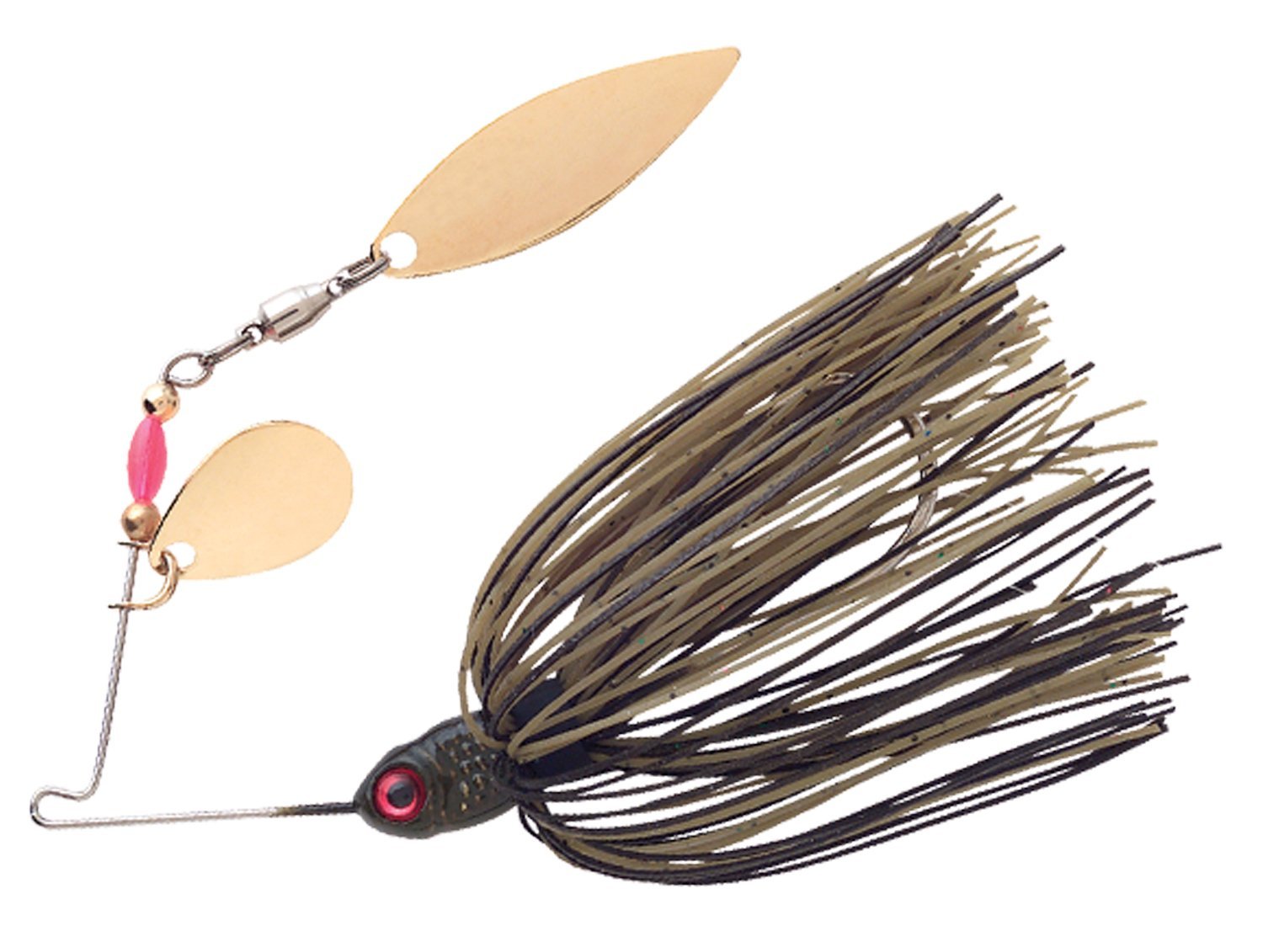
Also commonly known as ‘spinners’, these types of lures combine many different features to provide extremely enticing action that will appeal to almost any fish. These lures often look a little longer and more slender, and include blades, which are the most defining features of a spinner.
The blades are the reason why these lures are called spinners. As they are retrieved from the water, the blades will spin very rapidly, creating a vibration and stunning flash that make them irresistible for most fish. The size and style of blades will determine the extent of vibration and flash, and also allows you to customize your tackle based on your history of success with particular spinners.
Spinners will also often come with a skirt made from either plastic or hair. This adds to the appearance of the lure and can be optimized to many different situations. These skirts can help reduce the chance of a snag, and some spinners also come with a guard specific to that purpose.
Spinners are extremely versatile and can be used to cover lots of water in a short amount of time, but they can also be used in a jigging fashion, which can be a great trick if you’re looking to drop into heavy cover. Check out our spinnerbaits guide if you would like to learn more!
- Jigheads
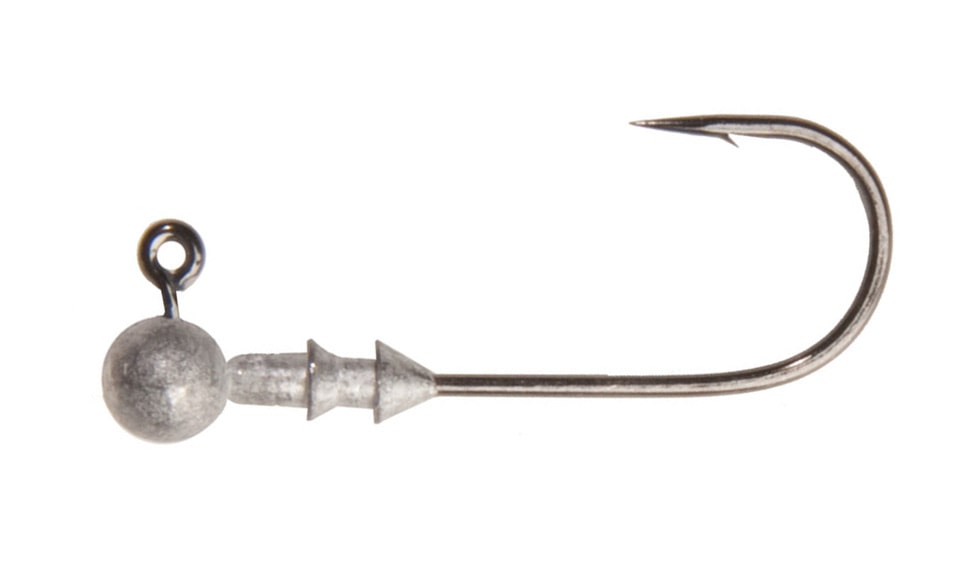
Also known as jigs, these are extremely common and simple lures that you can try almost anywhere. While it’s possible to cast and retrieve a jig like you would a crank or spinner, this defeats the purpose of the design.
Jigs themselves are small and simple weighted “heads” with a hook directly underneath. You can use the jig on its own, but it is typically paired with some form of bait. The most common types of bait to place on the hook are plastic worms or crawfish, as well as PowerBait, live worms, or any other attractant that you can get your hands on.
One of the best ways to use jigs is in and around areas of heavy cover. If you are in a boat, even better, as you can simply drop the jig down in a specific location to your desired depth. Upon retrieval, instead of reeling it in steadily, you will bring the rod tip up with a flick of the wrist, reel in some of the slack, let it drop back down, and repeat until you have fully retrieved your jig. This doesn’t have to be in perfectly vertical motion either. You can cast from the shore and jig your line in, or any other type of erratic movement in a stop-and-go fashion will work as well.
I usually prefer plain colors for the jighead, such as white or black (with eyes in the opposite color). If the conditions are murky, I may try something brighter like chartreuse. Plain colored plastic worms work well for me, but you can further boost your chances by using some scented bait as well. For more information, please check out our guide on how to use a jig.
- Topwater Lures
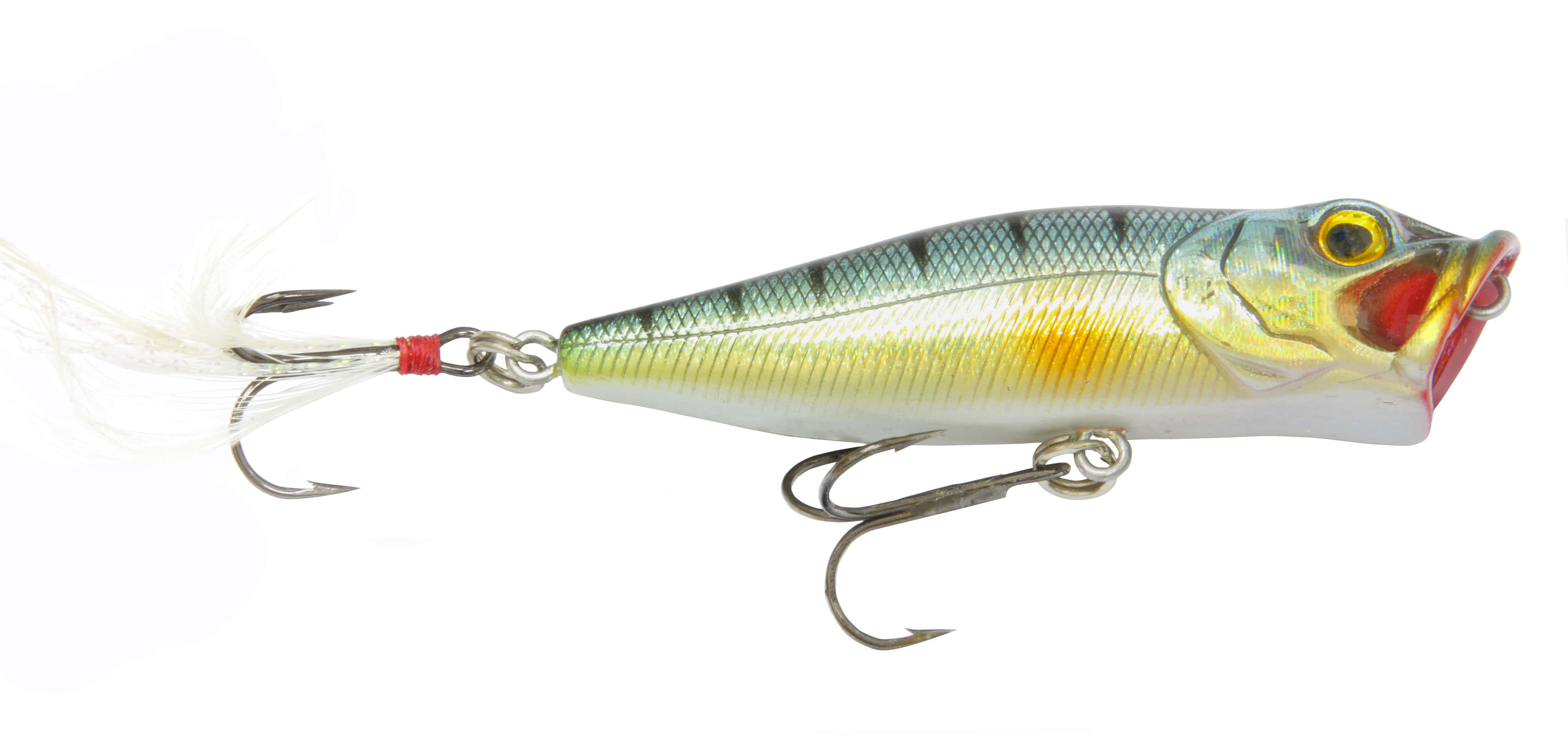
Topwater lures aren’t the most common, but you’ll still see them around a lot, and they consist of some of the more fun lures to try! Poppers are probably the most common type of topwater lure, and they look somewhat similar to a crank, usually a little more slender and they won’t have a lip.
As the name suggests, topwater lures are meant for the top of the water column. When you cast a topwater lure, it will float on the water mimicking surface prey. To add to the attractiveness of these lures, they usually have something on them that causes a bit of a ruckus as you retrieve the lure. In the case of the popper, you will notice a concave mouth (front surface), which will cause the lure to pop up erratically upon retrieval, ultimately resembling injured prey. Another common type of topwater lure is a prop, which contains tiny propellers on the lure that buzz and kick up some water upon retrieval.
Topwater lures are somewhat versatile in that many different fish species will be enticed by them; however, the fish need to be dwelling close enough to the surface for the lure to be very effective. They are also a little difficult to learn sometimes, but it’s worth it once a fish finally strikes, as it usually leads to a massive jump from the fish and an awesome hookset. Check out our guide on how to use a topwater lure to get started!
